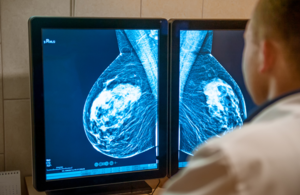Developers of a new government-backed ultrasound technology claim that it could help improve breast cancer diagnoses in women.
Women with significantly denser breast tissue are around six times more likely to develop breast cancer than those with low breast density.
Breast density is currently estimated through mammogram and MRI scans, which means detection is left to healthcare providers, leaving room for error.
The National Physical Laboratory (NPL) is currently developing a new ultrasound technology which delivers quantitative measurements of breast tissue composition and could have a significant impact on breast density assessment.
The government claims the technology could help the more than 700,000 women in the UK living with undetected high breast density, suggesting it could also lead to the earlier detection of breast cancer.
Development of the technology, which can also help monitor response to treatment, is being funded by the Government Office for Technology Transfer (GOTT).
"While the technology is currently in the research phase, we are encouraged by our in-person results and excited for the technology journey from bench top to bedside," said Daniel Sarno, research scientist at the NPL. "The Knowledge Assets Grant Fund has enabled us to continue to pursue our vision for getting this technology into the market and used by those who can benefit from it."
Latest News
-
The top technology trends to expect in 2026
-
The most read National Technology News stories of 2025
-
Lyft and Uber sign deals with Baidu for robotaxi trial in London
-
Nextdoor launches AI-driven self-serve ads platform for small businesses
-
Italy's antitrust fines Apple €98.6m over alleged App Store dominance
-
Visa partners with UAE real estate firm to launch voice-enabled agentic commerce payments
The future-ready CFO: Driving strategic growth and innovation
This National Technology News webinar sponsored by Sage will explore how CFOs can leverage their unique blend of financial acumen, technological savvy, and strategic mindset to foster cross-functional collaboration and shape overall company direction. Attendees will gain insights into breaking down operational silos, aligning goals across departments like IT, operations, HR, and marketing, and utilising technology to enable real-time data sharing and visibility.
The corporate roadmap to payment excellence: Keeping pace with emerging trends to maximise growth opportunities
In today's rapidly evolving finance and accounting landscape, one of the biggest challenges organisations face is attracting and retaining top talent. As automation and AI revolutionise the profession, finance teams require new skillsets centred on analysis, collaboration, and strategic thinking to drive sustainable competitive advantage.
© 2019 Perspective Publishing Privacy & Cookies








Recent Stories